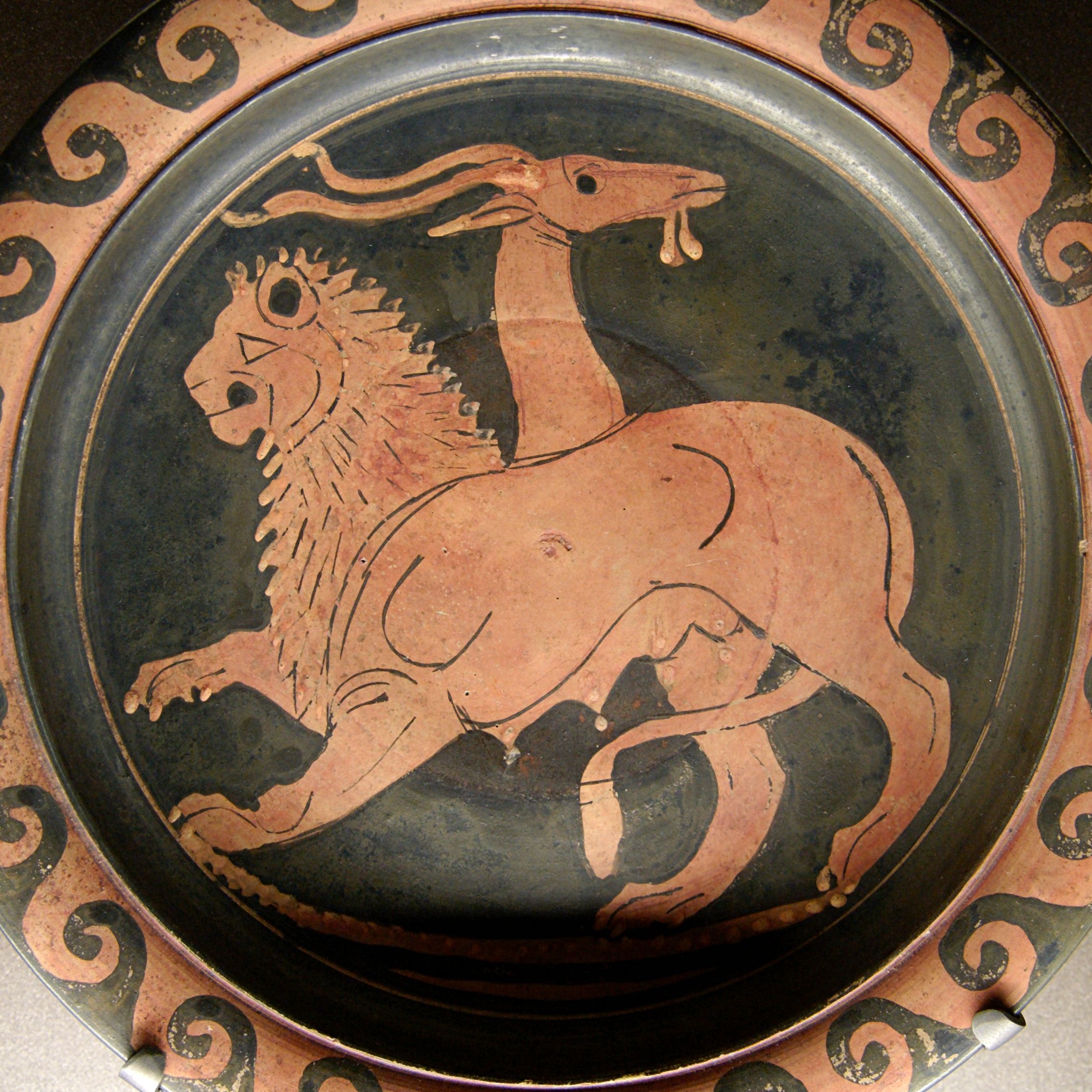
[caption id="attachment\\_3277" align="alignright" width="240" caption="Chimera Rhesus monkeys. Credit: OHSU"][](http://sciencereview.berkeley.edu/wp-content/uploads/2012/02/022012\_rhesusChimera1.jpg)[/caption]
Say hello to Roku, Hex, and Chimero, three adorable rhesus monkey infants who have recently stepped into the Internet limelight. Aptly named, each of these tiny mammals was concocted early in fetal development by mixing the cell lines of up to six genetically distinct progenitor individuals. By scientific definition, these little guys are what we call engineered chimera.
The term chimera originated in ancient Greek mythology millenia before it was co-opted for modern scientific jargon. The Greek Chimera, in fact, was a terrible fire-breathing creature. Depicted as a lioness with a goat's head protruding from her back and a snake for a tail, she was related to other (perhaps more famous) Greek mythological monsters, including Cerberus and the Lernaean hydra.
Western scholars also apply the term chimera to many beasts in ancient Chinese mythology. Depictions of the Qilin, for example, date back to the 5th century BC. While the Qilin's construction has been altered slightly throughout the centuries, all Qilin are shown with a single horn on the forehead, a body covered in scales, and four hoofed feet. Other Chinese chimera include the Bixie and Tianlu, both of which were winged beasts.
[caption id="attachment\\_3274" align="alignleft" width="200" caption="Greek Chimera"][](http://sciencereview.berkeley.edu/wp-content/uploads/2012/02/022012\_greekChimera.jpg)[/caption]
While these early chimeric forms were mythological constructions of disjointed body parts merged into Frankensteinesque creatures, today's chimera are a very real scientific sensation. Yet Western culture largely still associates chimera with the ungodly and unnatural. In reality, nothing could be further from the truth.
Chimera -- even human chimera -- are as normal and natural as other genetic or congenital conditions, like leucism or holoprosencephaly (both of which I have written about in earlier BSR posts). So when you look at a photo of chimeric Rhesus infants, or in the future when you read scientific articles claiming exceptional work with chimeric embryos, I advise you to remember the following:
Nature made chimera first. All modern life originated from unicellular organisms, but even unicellular organisms aren't as simple as we often consider them to be. Photosynthetic organisms owe their light-harvesting capabilities to an ancestor who once engulfed an entire cyanobacterium and lived to tell the story. Similarly, most protists and all animals rely on mitochondria for energy production, but extensive evidence exists to indicate that mitochondria were once autonomous organisms.The fantastic process by which one organism hosts another is termed endosymbiosis, and it is one way that a chimera can be formed. Both unicellular algae and 60-foot kelp stalks alike are chimera. Bacterial biofilms and coral are, too. And let's not forget lichen, which is composed of both fungus and either algae or cyanobacteria. The point is, chimeric lifeforms are exceedingly common, having originated hundreds of millions of years ago in the earliest steps of the evolutionary pathways.
[caption id="attachment\\_3276" align="alignright" width="180" caption="Coral reefs: one of nature's many chimera"][](http://sciencereview.berkeley.edu/wp-content/uploads/2012/02/022012\_coralReef.jpg)[/caption]13. Nature also made chimera better. Nature's chimera have evolved into some of the most complex, dynamic, and amazing organisms on Earth. The sequoia's ancestors were algal slime; now their pinnacles tower nearly a half-mile above ground. The cheetah, which can run at speeds of up to 75 mph, evolved from unicellular organisms completely lacking in locomotive abilities. The coral of the Great Barrier Reef span over 1,600 miles, but each polyp measures just millimeters in length. By comparison, the biological complexity of most engineered chimera is akin to a swirled up bowl of M&Ms and Skittles.
Primate chimera are just as normal as you and I. Primate chimera exist all around us. Tetragametic chimerism is a condition found in humans in which one baby is born after two embryos fuse early during fetal development. The cells rarely mix evenly, leading to, for example, an individual with a liver of one genetic constitution and kidneys of the other. In the case of the reproductive organs, the embryo line that they descend from determines the individual's biological sex and reproductive capabilities. Imagine being a woman who can bear children but has skin with XY chromosomes -- and it's all entirely natural, healthy, and normal! Sometimes, organs may contain both cell lines, leading to complex pigmentation maps of hair, skin, or eye coloring. In short, while our little Rhesus infant friends may seem like laboratory oddities, in actuality, they're just a variation on a perfectly normal process that occurs naturally in both primates and the animal kingdom at large.
Want to see some chimera for yourselves? Just take a trip to the Botanic Gardens or the zoo! (Or take a look in the mirror!)



